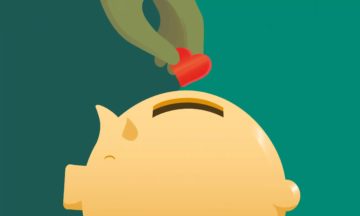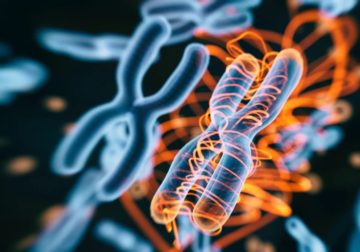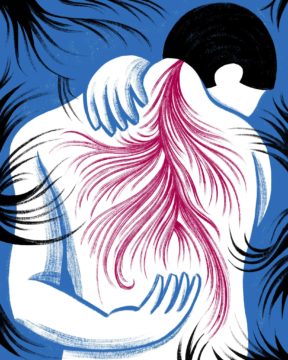by Sarah Firisen
 I’m going to date myself in a significant way now: when I was in high school, we had to use books of trigonometric tables to look up sine and cosine values. I’m not so old that it wasn’t possible to get a calculator that could tell you the answer, but I’m assuming that the rationale at my school was that this was cheating in some way and that we needed to understand how actually to look things up. I know that sounds quaint now. I also remember when I used an actual book as a dictionary to look up how to spell words. Yes, youth of today, there were actual books that were dictionaries, and you had to find your word in there, which could be challenging if you didn’t know how to spell the word to begin with.
I’m going to date myself in a significant way now: when I was in high school, we had to use books of trigonometric tables to look up sine and cosine values. I’m not so old that it wasn’t possible to get a calculator that could tell you the answer, but I’m assuming that the rationale at my school was that this was cheating in some way and that we needed to understand how actually to look things up. I know that sounds quaint now. I also remember when I used an actual book as a dictionary to look up how to spell words. Yes, youth of today, there were actual books that were dictionaries, and you had to find your word in there, which could be challenging if you didn’t know how to spell the word to begin with.
These days, if you have turned in a paper without putting it through basic digital spellcheck, you deserve to fail the class. And most editing tools have some at least rudimentary grammar checking. In addition to those built-in tools, I use Grammarly and have encouraged my college-age daughters to use it. It used to be the case, at least when I was in school and college, that you lost marks for bad spelling and grammar. There is no good reason a piece of writing today shouldn’t have mostly correct spelling and basic grammar. But spelling and grammar checking doesn’t make you a good writer, and a scientific calculator doesn’t make me a better mathematician. They’re just tools. By the way, I also used to get marks deducted for my bad handwriting. Bad handwriting isn’t an issue for anyone over ten or so (or maybe younger these days) when almost all communication is electronic. So does bad handwriting matter? I can’t remember the last time I wrote anything longer than a greeting card. These days, it’s far more important to be computer literate than to be able to write good cursive.
Which brings me to ChatGPT, a new AI chatbot created by OpenAI, an artificial intelligence research company. Read more »


 Now that the hangover from New Year’s Eve is abating for many, and we might be freshly open to some self-improvement, consider a Buddhist view of using meditation to tackle addictions. I don’t just mean for substance abuse, but also for that incessant drive to check social media just once more before starting our day or before we finally lull ourselves to sleep by the light of our devices, or the drive to buy the store out of chocolates at boxing day sales. Not that there’s anything wrong with that on its own– it’s a sale after all–but when actions are compulsive instead of intentional, then this can be a different way of approaching the problem from the typical route. I’m not a mental health professional, but this is something I’ve finally tried with earnest and found helpful, but it took a very different understanding of it all to get just this far (which is still pretty far from where I’d like to be).
Now that the hangover from New Year’s Eve is abating for many, and we might be freshly open to some self-improvement, consider a Buddhist view of using meditation to tackle addictions. I don’t just mean for substance abuse, but also for that incessant drive to check social media just once more before starting our day or before we finally lull ourselves to sleep by the light of our devices, or the drive to buy the store out of chocolates at boxing day sales. Not that there’s anything wrong with that on its own– it’s a sale after all–but when actions are compulsive instead of intentional, then this can be a different way of approaching the problem from the typical route. I’m not a mental health professional, but this is something I’ve finally tried with earnest and found helpful, but it took a very different understanding of it all to get just this far (which is still pretty far from where I’d like to be).
 Each of us constructs and lives a “narrative”,’ wrote the British neurologist Oliver Sacks, ‘this narrative is us’. Likewise the American cognitive psychologist Jerome Bruner: ‘Self is a perpetually rewritten story.’ And: ‘In the end, we become the autobiographical narratives by which we “tell about” our lives.’ Or a fellow American psychologist, Dan P McAdams: ‘We are all storytellers, and we are the stories we tell.’ And here’s the American moral philosopher J David Velleman: ‘We invent ourselves… but we really are the characters we invent.’ And, for good measure, another American philosopher, Daniel Dennett: ‘we are all virtuoso novelists, who find ourselves engaged in all sorts of behaviour… and we always put the best “faces” on it we can. We try to make all of our material cohere into a single good story. And that story is our autobiography. The chief fictional character at the centre of that autobiography is one’s self.’
Each of us constructs and lives a “narrative”,’ wrote the British neurologist Oliver Sacks, ‘this narrative is us’. Likewise the American cognitive psychologist Jerome Bruner: ‘Self is a perpetually rewritten story.’ And: ‘In the end, we become the autobiographical narratives by which we “tell about” our lives.’ Or a fellow American psychologist, Dan P McAdams: ‘We are all storytellers, and we are the stories we tell.’ And here’s the American moral philosopher J David Velleman: ‘We invent ourselves… but we really are the characters we invent.’ And, for good measure, another American philosopher, Daniel Dennett: ‘we are all virtuoso novelists, who find ourselves engaged in all sorts of behaviour… and we always put the best “faces” on it we can. We try to make all of our material cohere into a single good story. And that story is our autobiography. The chief fictional character at the centre of that autobiography is one’s self.’ What do Noam Chomsky, living legend of linguistics, Kai-Fu Lee, perhaps the most famous AI researcher in all of China, and Yejin Choi, the 2022 MacArthur Fellowship winner who was profiled earlier this week in The New York Times Magazine—and more than a dozen other scientists, economists, researchers, and elected officials—all have in common?
What do Noam Chomsky, living legend of linguistics, Kai-Fu Lee, perhaps the most famous AI researcher in all of China, and Yejin Choi, the 2022 MacArthur Fellowship winner who was profiled earlier this week in The New York Times Magazine—and more than a dozen other scientists, economists, researchers, and elected officials—all have in common? The problems created by humanity’s dependence on fossil fuels are widely appreciated, and governments and businesses are now pursuing renewable energy and electric vehicles as the solution. Less appreciated is that this new infrastructure will require the mining of vast amounts of metals, creating different problems. In Volt Rush, Financial Times journalist Henry Sanderson gives a well-rounded and thought-provoking exposé of the companies and characters behind the supply chain of foremost the batteries that will power the vehicles of the future. If you think a greener and cleaner world awaits us, Volt Rush makes it clear that this is far from a given.
The problems created by humanity’s dependence on fossil fuels are widely appreciated, and governments and businesses are now pursuing renewable energy and electric vehicles as the solution. Less appreciated is that this new infrastructure will require the mining of vast amounts of metals, creating different problems. In Volt Rush, Financial Times journalist Henry Sanderson gives a well-rounded and thought-provoking exposé of the companies and characters behind the supply chain of foremost the batteries that will power the vehicles of the future. If you think a greener and cleaner world awaits us, Volt Rush makes it clear that this is far from a given. I really enjoy doing it: it makes me feel good about myself. It gives me a boost, mentally and physically.” If these were your reactions to an activity, you’d surely be inclined to do it as often as you could. After all, aren’t a lot of us looking for ways to find more meaning in life and to be happier and healthier? What, then, is the act that elicits such positive responses? The answer: being
I really enjoy doing it: it makes me feel good about myself. It gives me a boost, mentally and physically.” If these were your reactions to an activity, you’d surely be inclined to do it as often as you could. After all, aren’t a lot of us looking for ways to find more meaning in life and to be happier and healthier? What, then, is the act that elicits such positive responses? The answer: being  S
S In recent years, the vagus nerve has become an object of fascination, especially on social media. The vagal nerve fibers, which run from the brain to the abdomen, have been anointed by some influencers as the key to reducing anxiety, regulating the nervous system and helping the body to relax.
In recent years, the vagus nerve has become an object of fascination, especially on social media. The vagal nerve fibers, which run from the brain to the abdomen, have been anointed by some influencers as the key to reducing anxiety, regulating the nervous system and helping the body to relax.